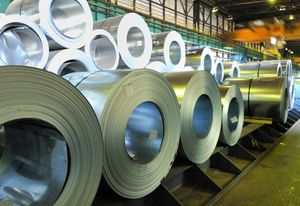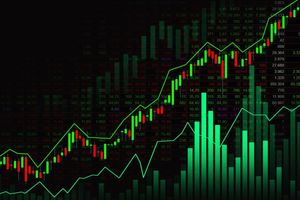
In a perplexing twist for the global commodity markets, copper prices have recently experienced a short-term decline, defying the bullish expectations fueled by persistent and significant supply concerns from major operations, most notably the Grasberg mine in Indonesia. This counter-intuitive trend, observed on October 6, 2025, has introduced a layer of complexity and volatility for investors and industries reliant on the red metal, prompting a re-evaluation of the immediate drivers influencing one's of the world's most critical industrial commodities.
The current market dynamic presents a fascinating paradox: while fundamental indicators point towards a tightening supply – exacerbated by severe disruptions at key mines – macroeconomic headwinds are temporarily overriding these bullish signals. This delicate balance between robust long-term demand drivers and immediate external pressures highlights the intricate interplay of factors shaping commodity prices in an increasingly interconnected global economy.
Unpacking the Paradox: Grasberg's Woes Meet Macroeconomic Headwinds
The recent dip in copper prices comes against a backdrop of severe supply disruptions that have, for months, propelled the metal to multi-year highs. The most significant of these has been the ongoing crisis at the Grasberg mine, operated by Freeport-McMoRan (NYSE: FCX). In September 2025, the world's second-largest copper mine declared force majeure following tragic mudslides that flooded its underground tunnels, halting operations. This catastrophe, which resulted in fatalities, is projected to cause substantial production cuts, with some analysts estimating a loss of nearly 600,000 tonnes of copper between September 2025 and the end of 2026. This disruption, combined with operational setbacks in Chile and the Democratic Republic of Congo, had led analysts to revise global copper market balances from projected surpluses to significant deficits for 2025 and beyond.
Despite these dire supply forecasts, Monday, October 6, 2025, saw copper prices retreat from their recent peaks. This immediate decline can be attributed to several overriding macroeconomic factors. A strengthening US dollar, driven by political developments in Europe and Japan, made dollar-priced commodities more expensive for international buyers, thereby dampening demand. Simultaneously, investor attention shifted towards upcoming US economic data, such as jobless claims and inflation expectations, and statements from Federal Reserve officials. Any signals of a cautious stance on interest rate cuts can influence sentiment towards industrial commodities, as lower rates typically stimulate economic activity and commodity consumption. This confluence of a stronger dollar and a renewed focus on potential economic slowdowns temporarily outweighed the pressing concerns of physical supply shortages.
Initial market reactions have been characterized by increased volatility. While long-term investors remain bullish on copper's prospects due to its critical role in the green energy transition, short-term traders are navigating a choppy market influenced by daily macroeconomic news. The divergence reinforces the powerful influence of currency fluctuations and monetary policy on commodity markets, even in the face of severe fundamental supply constraints. This dynamic has created an environment where even significant supply shocks can be temporarily overshadowed by broader economic sentiment, leading to unpredictable short-term price movements.
Corporate Crossroads: Winners and Losers in a Volatile Copper Market
The current copper market dynamics, characterized by declining prices despite persistent supply concerns, create a complex landscape for public companies, yielding both potential winners and losers.
Major copper miners, such as Freeport-McMoRan (NYSE: FCX), the operator of the Grasberg mine, are undoubtedly facing significant headwinds. The production halt and force majeure at Grasberg directly impact their output and revenue, leading to potential earnings downgrades. Other large miners like BHP Group (ASX: BHP) and Rio Tinto (ASX: RIO), while not directly affected by the Grasberg incident, may see their overall revenues impacted by softer short-term copper prices. However, these companies could benefit in the longer term if the supply deficit pushes prices higher once macroeconomic pressures ease. For now, their profitability margins might be squeezed by the combination of high operational costs and a temporary dip in selling prices. Companies with diversified portfolios across various commodities might be better insulated than those heavily reliant on copper.
Conversely, companies in copper-intensive industries could experience a temporary reprieve. Manufacturers of electric vehicles, such as Tesla (NASDAQ: TSLA) and BYD (HKEX: 1211), along with renewable energy infrastructure developers and construction firms, are major consumers of copper. A short-term decline in copper prices, even if temporary, offers a brief window for these companies to potentially reduce input costs, thereby improving their profit margins or allowing for more competitive pricing of their products. This could be particularly beneficial for companies operating on thin margins or those looking to expand production capacity. However, the underlying long-term bullish outlook for copper means this reprieve is likely fleeting, and these companies will still need robust strategies for securing future supply and managing price volatility.
Furthermore, companies involved in copper recycling, like Aurubis AG (XTRA: NDA), might see varied impacts. While lower primary copper prices could reduce the relative attractiveness of recycled copper, persistent supply shortages from mines could also increase demand for secondary sources. Financial institutions and hedge funds with significant exposure to commodity futures are also key players. Those who bet on continued price surges due to supply deficits might face short-term losses, while those who anticipated a macroeconomic correction could profit. The increased volatility also creates opportunities for sophisticated traders to capitalize on price swings, but also carries heightened risks.
Broader Implications: A Barometer for Global Economic Health and Green Transition
The counter-intuitive decline in copper prices amidst severe supply concerns at mines like Grasberg carries wider significance, acting as a crucial barometer for global economic health and the trajectory of the green energy transition. This event underscores how deeply intertwined commodity markets are with macroeconomic forces, even when fundamental supply-demand dynamics appear clear.
Firstly, this trend highlights the potent influence of the US dollar and global monetary policy on commodity valuations. A strengthening dollar makes raw materials more expensive for international buyers, effectively dampening demand regardless of physical scarcity. This reinforces the notion that copper, often dubbed "Dr. Copper" for its predictive power regarding economic health, is highly sensitive to interest rate expectations and central bank rhetoric. Any perceived tightening of monetary policy or signs of an economic slowdown can quickly overshadow even significant supply shocks, suggesting that the market is prioritizing demand-side fears over supply-side realities in the short term. This phenomenon fits into broader industry trends where global liquidity and currency strength play an increasingly decisive role in asset pricing across various sectors.
Secondly, the situation presents a critical challenge to the narrative of an inevitable and smooth green energy transition. Copper is indispensable for electric vehicles, renewable energy infrastructure, and advanced technologies like AI data centers. Persistent supply deficits, as projected due to incidents like Grasberg, pose a long-term threat to the affordability and pace of this transition. While the current price dip offers a momentary breather, the underlying scarcity means that strategic investments in new mining projects and recycling infrastructure are more critical than ever. Regulatory bodies and policymakers worldwide are increasingly recognizing the strategic importance of critical minerals, and this event could accelerate discussions around securing domestic supply chains and incentivizing new production, potentially leading to policy implications aimed at reducing reliance on volatile global markets.
Historically, there have been periods where commodity prices diverged from their fundamental supply picture due to broader economic shocks, such as the 2008 financial crisis or the initial stages of the COVID-19 pandemic. In those instances, a sudden collapse in demand or extreme market uncertainty temporarily overwhelmed supply constraints. While the current situation is less severe, it serves as a reminder that even in a structurally undersupplied market, global economic sentiment can dictate short-term price movements. The long-term outlook for copper remains robust, driven by electrification and decarbonization, but the short-term volatility underscores the fragility of this transition in the face of macroeconomic instability.
What Comes Next: Navigating Volatility and Strategic Shifts
The immediate future for copper prices will likely be characterized by continued volatility, as the market attempts to reconcile strong long-term fundamentals with short-term macroeconomic pressures. In the short term, investors will keenly watch upcoming US economic data, particularly inflation figures and employment reports, as well as statements from the Federal Reserve. Any indications of a more dovish stance or robust economic growth could quickly reverse the recent price dip, allowing the underlying supply deficit narrative to reassert itself. Conversely, signs of persistent inflation or a hawkish Fed could prolong the downward pressure.
Long-term possibilities remain bullish for copper. The global push towards decarbonization, including the proliferation of electric vehicles, expansion of renewable energy grids, and the build-out of AI infrastructure, guarantees a robust demand trajectory for the red metal. The ongoing supply disruptions at mines like Grasberg, coupled with the long lead times for new mine development, suggest that structural deficits are likely to persist for years. This imbalance points to higher copper prices in 2026 and 2027, making the current dip a potential buying opportunity for long-term investors.
Strategic pivots will be essential for various stakeholders. Mining companies must accelerate efforts to bring new projects online and enhance operational efficiencies at existing sites, while also investing in exploration to replenish reserves. For major consumers of copper, such as automotive and electronics manufacturers, securing long-term supply agreements and exploring alternative materials or recycling solutions will become paramount to mitigate future price shocks and ensure production continuity. Governments may also need to consider policies that incentivize domestic mining and processing to reduce geopolitical supply risks.
Potential scenarios range from a rapid rebound if macroeconomic fears subside, leading to a renewed bull run, to a prolonged period of sideways trading if economic uncertainty persists. The most likely outcome is a continuation of short-term price fluctuations, with a gradual upward trend as the demand from the green transition increasingly outweighs temporary economic headwinds. Market opportunities may emerge for companies that can innovate in copper recycling or develop more efficient extraction technologies, while challenges will persist for those heavily exposed to price volatility without adequate hedging strategies.
Copper's Enduring Significance: A Market in Transition
The recent decline in copper prices, despite significant supply concerns from key operations like the Grasberg mine, serves as a powerful reminder of the complex and often contradictory forces at play in global commodity markets. The key takeaway is that while the long-term fundamental outlook for copper remains overwhelmingly bullish due to its indispensable role in the green energy transition and persistent supply deficits, short-term price movements can be heavily influenced by broader macroeconomic factors, particularly currency strength and monetary policy expectations. This creates a market characterized by both inherent strength and immediate volatility.
Moving forward, the copper market will continue to be a critical indicator of global economic health and the pace of industrial decarbonization. The current situation underscores the market's sensitivity to shifts in global liquidity and investor sentiment, highlighting that even severe physical supply disruptions can be temporarily overshadowed by fears of economic slowdown or a strengthening dollar. This assessment suggests that while the current dip might be a temporary correction, the underlying structural issues of insufficient supply to meet burgeoning demand are far from resolved.
For investors, the coming months will require careful monitoring of both supply-side developments – particularly the operational status of major mines like Grasberg and the progress of new projects – and demand-side indicators, including global manufacturing data, economic growth forecasts, and central bank communications. The long-term narrative for copper as a crucial component of the future economy remains robust, making any significant price corrections potentially attractive entry points for those with a longer investment horizon. However, short-term traders must remain agile, ready to respond to the interplay of fundamental scarcity and macroeconomic headwinds that will define copper's journey in this transitional period.
This content is intended for informational purposes only and is not financial advice.





